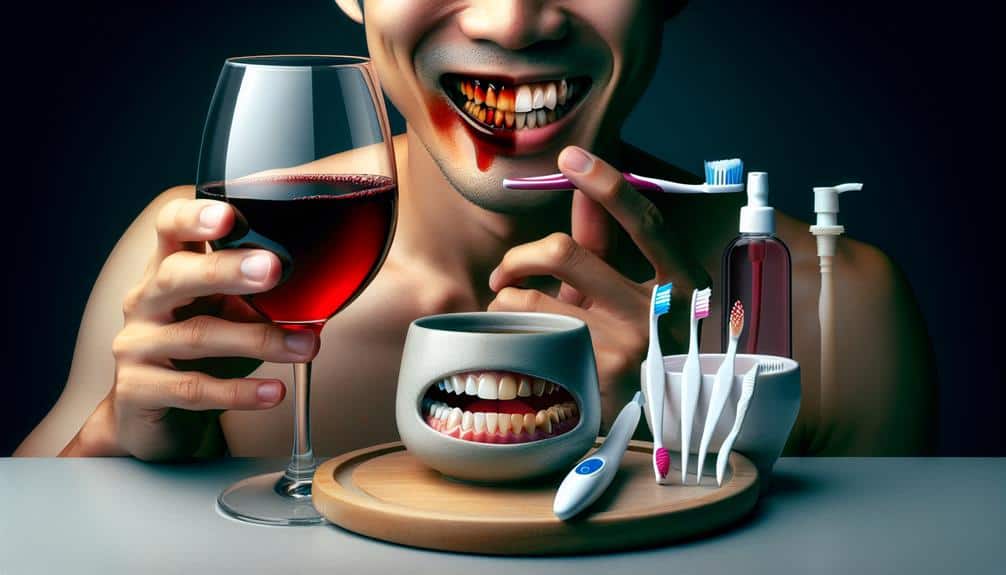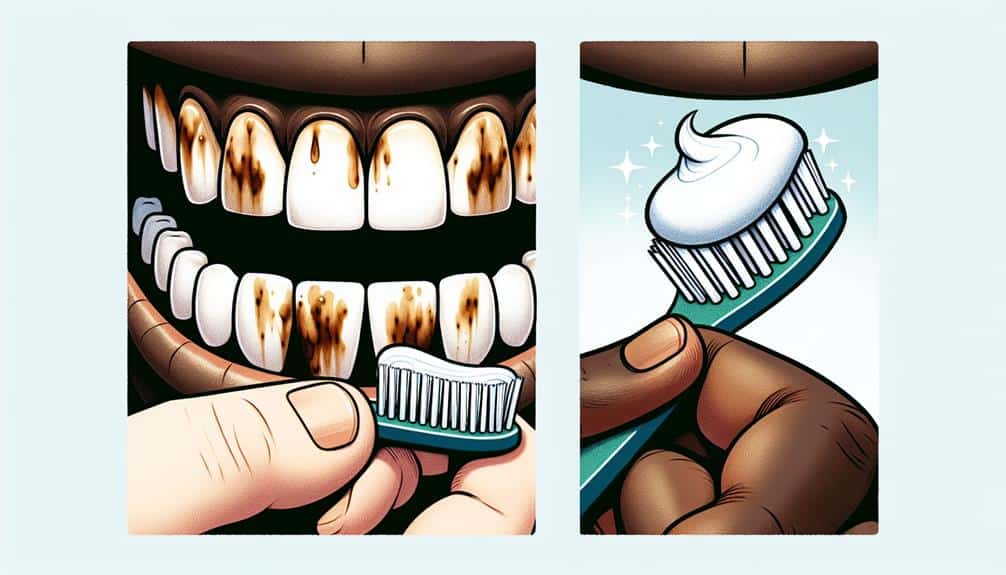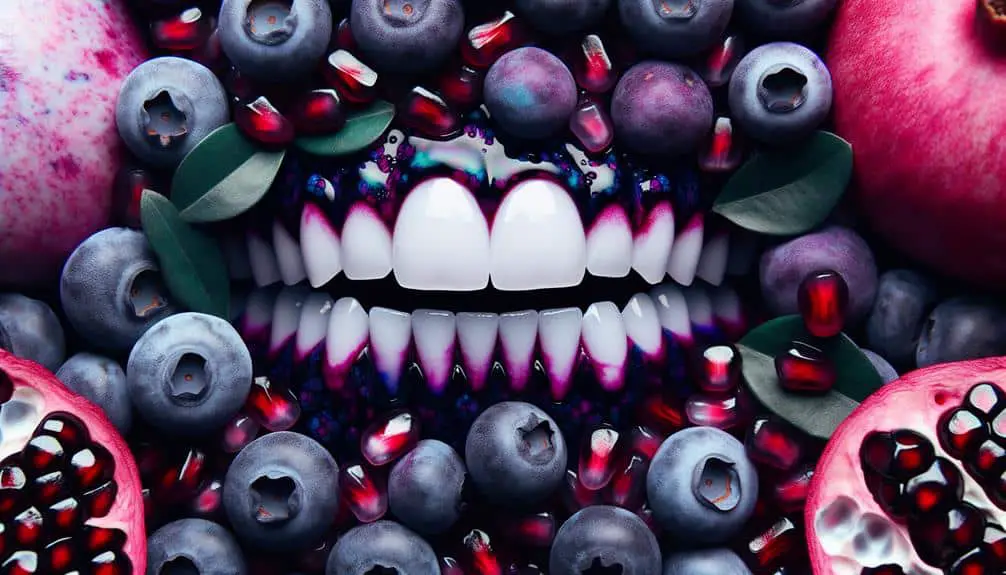To tackle honey and maple syrup stains, start by scraping off excess residue with a blunt edge, then blot the affected area with a cloth dampened in warm water. Mix dish soap with water to create a cleaning solution and gently scrub the stain. Rinse with cold water and repeat if needed. For stubborn fabric stains, pre-treat with a stain remover before washing. If dealing with non-porous surfaces like glass, a mixture of vinegar and water can effectively clean the sticky mess. Consider exploring these effective methods to successfully combat and eliminate these challenging stains.
Key Points
- Blot the stain immediately to prevent deeper penetration.
- Rinse the fabric with cold water to dilute and remove the sticky residue.
- Apply a stain remover or detergent to target the remaining stain.
- Wash the fabric in the hottest water safe for the material.
- Air dry the fabric or use a dryer after confirming the stain is gone.
Understanding Honey and Maple Syrup Stains
To effectively remove honey and maple syrup stains, it's important to understand the composition and behavior of these sticky substances on different surfaces. Stain penetration varies depending on the material it lands on. Porous fabrics like cotton or linen may absorb the sticky residue more quickly, making the stain harder to remove. On the other hand, non-porous surfaces such as glass or metal may have the stain sit on the surface, making it easier to clean.
Fabric compatibility is essential when dealing with honey and maple syrup stains. Different fabrics react differently to these substances. For example, silk is delicate and may not tolerate harsh cleaning agents, while polyester is more robust and can withstand stronger treatments. Understanding the fabric you're dealing with will help you choose the right cleaning method without damaging the material.
Common Causes of Teeth Staining
Teeth staining commonly occurs due to the consumption of certain foods and beverages that have pigments or acidic properties. Coffee stains are a prevalent cause of teeth discoloration. The dark pigments in coffee can adhere to the enamel, leading to yellowing or browning of the teeth over time. Similarly, smoking is another significant culprit for teeth staining. The tar and nicotine present in cigarettes can cause stubborn stains that are challenging to remove.
When you drink coffee or smoke, the substances come into direct contact with your teeth, allowing for the pigments and chemicals to penetrate the enamel. Over time, these stains can become more pronounced, affecting the overall appearance of your smile. It's essential to be mindful of these factors if you want to maintain a bright, white smile.
To prevent or reduce teeth staining from coffee and smoking, consider limiting your consumption of these substances. Additionally, regular dental cleanings and professional whitening treatments can help combat stubborn stains caused by these common culprits.
Effective Home Remedies for Stain Removal
For effective removal of stains at home, consider utilizing tried-and-tested remedies that can help restore the appearance of your teeth. Lemon vinegar is a potent natural remedy known for its stain-fighting properties. Mix equal parts lemon juice and vinegar, apply the solution to the stained areas, and let it sit for a few minutes before rinsing thoroughly.
Baking soda is another effective household item for stain removal. Create a paste using baking soda and hydrogen peroxide, gently scrub the paste onto the stains, and rinse well. Hydrogen peroxide can also be used on its own as a gentle bleach alternative. Dab a small amount on a cotton ball and apply it to the affected areas, allowing it to sit for a minute or two before rinsing.
These home remedies have proven beneficial for many individuals seeking to combat stubborn stains on their teeth, offering a cost-effective and natural solution to brighten your smile.
Professional Whitening Options
Considering professional whitening options allows you to achieve a brighter smile under the expertise of trained professionals. Teeth discoloration can be effectively treated through dental bleaching procedures offered by dentists. These treatments involve the application of bleaching agents to the teeth, which help break down stains and lighten the overall shade of your teeth.
Professional whitening options provide customized solutions tailored to your specific needs. Dentists assess the level of discoloration in your teeth and determine the most suitable bleaching treatment for best results. They've access to high-quality bleaching agents that are more potent than over-the-counter products, ensuring a more efficient and long-lasting whitening effect.
During a professional dental bleaching session, dentists take precautions to protect your gums and soft tissues while applying the bleaching agent to your teeth. This guarantees that the whitening treatment is safe and minimizes any potential side effects. Additionally, dentists can provide guidance on post-treatment care to help maintain the results and prevent future teeth stains.
Prevention Tips for Future Stains
To maintain the results of your professional whitening treatment, implementing effective prevention tips for future stains is essential. Preventive measures play an important role in preserving the brightness of your teeth. One key strategy is to be mindful of your diet. Limiting the consumption of foods and beverages known to cause stains, such as coffee, tea, and red wine, can greatly reduce the risk of discoloration.
Additionally, practicing good oral hygiene, including regular brushing and flossing, can help prevent stains from forming on your teeth.
In addition to dietary changes and oral hygiene practices, you can also consider investing in stain-resistant fabrics. Fabrics treated with stain-resistant technology can repel liquids and prevent them from seeping into the material, making it easier to remove stains. When choosing clothing or upholstery for your home, opt for materials that offer stain resistance to help mitigate the impact of spills and accidents.
Frequently Asked Questions
Can Honey and Maple Syrup Stains Attract Insects or Pests if Not Properly Cleaned?
To maintain a pest-free environment, guarantee thorough cleaning of honey and maple syrup stains. Neglecting stains may attract unwelcome insects. Employ effective stain removal methods suitable for various fabric types to prevent such issues.
Will Using Hot Water to Clean Honey and Maple Syrup Stains Set the Stain Further Into Fabric?
When dealing with honey or maple syrup stains, avoid using hot water, as it can set the stain into the fabric. Instead, opt for cold water to rinse the stain first. For stubborn stains, using vinegar can help break down the residue efficiently.
Are There Any Specific Types of Fabric or Materials That Are More Prone to Staining From Honey and Maple Syrup?
Different types of materials react differently to honey and maple syrup stains. Fabrics like cotton and linen are more prone to staining. To remove stains effectively, use cold water and a gentle detergent.
Can Honey and Maple Syrup Stains Cause Damage to Countertops or Other Surfaces if Not Immediately Cleaned?
To prevent damage, immediately clean honey and maple syrup stains from countertops. Use gentle cleaning methods to protect surfaces. Regular maintenance with appropriate cleaning products can help maintain the integrity of your countertops for long-term durability.
Is It Possible for Honey and Maple Syrup Stains to Leave a Lingering Odor Even After Cleaning?
Persistent odors from honey and maple syrup stains can be a nuisance despite cleaning efforts. To guarantee thorough removal of the sticky residue using appropriate cleaning techniques tailored to different fabric types for effective odor elimination.




